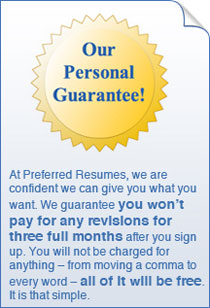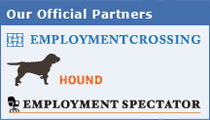The Design Element in Your Resume
By Megan Brooks
|
|
Resumes are a document that are often considered to be 'dry' or something that does not merit anything by way of 'design'. While this may be true so far as embellishment goes, it is important to realize that design elements are not the same thing as embellishments or decorations.
Design elements constitute basic forms such as space, colors, forms such as lines, shapes, texture, and the type of lettering or font. For the purpose of the resume, you probably need to look at proper usage of only a few of these, including lines, space, and font type. The use of colors is not there in its classic sense, in a resume. However, effective use of gray tones in the resume can work wonders for your job search if done in a conservative manner and judiciously.
But why consider design elements at all? Used correctly, design elements can help draw attention to your document and help take the reader directly to areas you would wish to highlight.
Lines: Place these strategically in your document to draw attention to key areas. For example, you can place borders under your name and address. Follow this up with underlines on the section headings such as your experience, education, etc. Choose the appropriate thickness of lines to draw attention.
Gray tone: Used appropriately, gray tones can help draw attention instantly to your professional accomplishments listed in the resume. Used in proportions of 30 % or 35 %, gray can be used on blocks of text, such as the name and address block, to highlight these areas. A similar tone can also be used on different sections of the resume with the same purpose: that to highlight.
White space: Space is an element that can convey cleanliness, calm, or clutter; depending on the way it is used. When working on your resume, make sure you do not fill up the page with text unnecessarily. If necessary, rewrite portions; use smaller sentences and verbs effectively to create more concise blocks of text. Ensure you leave adequate space between two lines. Create margins around the text; you will be surprised to see that it is often this white space that actually attracts attention of the reader, instead of the text itself.
Font: What type face you are using in the text will make a big difference to the way your resume is perceived. In general, fonts will be divided into two categories: ones with serifs or end strokes, such as the Times New Roman font, and ones without serifs or devoid of any end stroke, such as Arial. In general, the ones with prominent end strokes are used for the purpose of embellishment. Depending on the way you use them, your resume will convey professionalism and a sense of purpose: both elements intrinsic to your job search.




